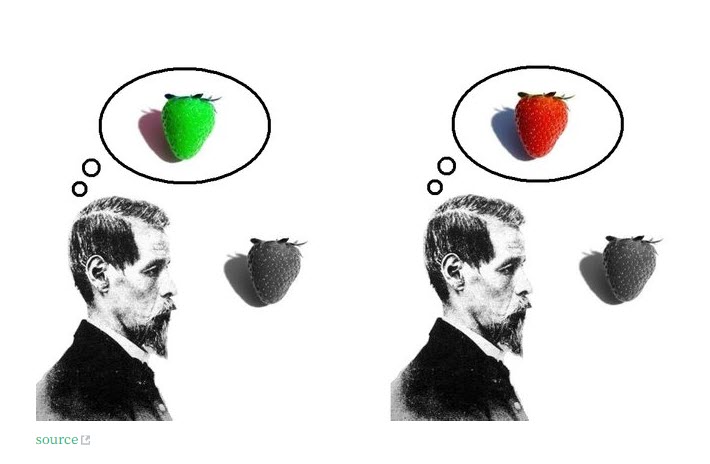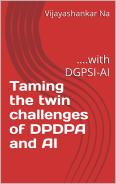At Naavi.org, we have frequently alluded to “Theory” to explain concepts. We discussed the “Theory of Information Security Motivation” at one time and also created the “Theory of Data” to explain “Data” and its relation to “Privacy”. We did make a brief mention of “Theory of Privacy” which is still to be explored. Now is the time to open the doors for discussing the “Theory of Mind”. We are converging on this topic from the need to understand the “Neuro Rights Protection” and also to understand the “Artificial Intelligence regulation”.
I am approaching these topics as a student and trying to understand the present thinking on this topic peppered with my own views.
Our own approach to human mind earlier has been through the “Philosophy” which tries to discuss the “Mind”, “Intellect” and “Consciousness” and their respective manifestations of the “Thought Process”, “Discretion” and “Awareness” .
Scientists of the modern era are coming towards the study from the biological concept of the Brain, the Nerve system, Neurons, the Dendrites, Electro-Chemical changes and Electro Magnetic signal processing that happens within the brain.
The Psychologists have their own approach to understand the behaviour of a person which is a manifestation of the instructions generated in the mind. They look at conscious mind, sub-conscious mind, emotions etc as different manifestation of the functioning of the brain.
When an AI programmer is trying to emulate the human brain and take it beyond the “I instruct…Remember and Execute” kind of functioning to a level where the program is instructed to “Learn while you decide and alter the behaviour to make the output more in tune with an objective” , the programmer tries to draw some understanding of the way human “Mind” functions so that he can set up a neural network close to the human intelligence.
It is in this context that the “Theory of Mind” appears the next door to open.
The Theory of Mind (TOM) is meant to understand how the brain is able to generate thoughts, emotions , feelings, beliefs etc which define the character of a person. It tries to find the reason why “Intuition” exists and an individual some times discards the earlier experience and takes decisions not backed apparently by any logic.
One plausible explanation is to consider that this is a kind of decision based on a probability estimate but whether it is as simple as a probabilistic decision making or some thing else like the “Sixth Sense” is a matter to be analyzed.
I was going through the book, “The Basic Theory of Mind” by Dr Chirapat Ukachoke to understand his perspective of the “theory of Mind”. One of the important concepts that the theory discusses is the concept of “Qualia” which is the way a person perceives the incoming neural signals. This brings us close to the concept of “Consciousness” and the “Theory of Maya” used in the Indian philosophy.
Basically “Qualia” is the ability of the mind to “See things”. While the sensory perceptions stimulate the mind to “See things”, it is possible that a person may “See” what is different from what other person sees and herein lies the origin of “Intuitiveness”.
We should remember that “What We see may not be what it is” since the perception is dependent on several aspects of the state of mind. Ideally the state of mind should have a direct correlation to the state of a sensory stimulation. But this may not be true. When you hear the word mango, some may perceive a ripe Alphanso and another may perceive a green Totapuri. When a red object is seen one person may see the colour and another may not or may see a different colour.
Other examples of qualia include the perceived sensation of pain of a headache, the taste of wine, as well as the redness of an evening sky.
All such perceptions cannot be dismissed with the deficiency of the sensory organizations. There could be a difference in the “Vision” not related to the sensory input alone.
In AI such happenings may be considered as “Errors” or “Deficiency in Training”. But when we try to provide self learning capability to the AI, can there be a situation where the AI will imagine things on its own and act in a manner that is not intended by the developer?… is the concern we need to resolve.
We need to explore this further and see if there is any learning we can take to the AI development.
Naavi
According to ChatGPT: Intuition and qualia are related in that both involve a type of direct, non-verbal understanding of the world. Intuition can be seen as a type of qualia in that it involves a direct, unconscious experience of knowledge, without the need for conscious reasoning or analysis. However, intuition can also be seen as distinct from qualia, in that it involves a more general, problem-solving type of mental processing, while qualia is more specific to individual sensory and mental experiences.








It’s becoming clear that with all the brain and consciousness theories out there, the proof will be in the pudding. By this I mean, can any particular theory be used to create a human adult level conscious machine. My bet is on the late Gerald Edelman’s Extended Theory of Neuronal Group Selection. The lead group in robotics based on this theory is the Neurorobotics Lab at UC at Irvine. Dr. Edelman distinguished between primary consciousness, which came first in evolution, and that humans share with other conscious animals, and higher order consciousness, which came to only humans with the acquisition of language. A machine with primary consciousness will probably have to come first.
What I find special about the TNGS is the Darwin series of automata created at the Neurosciences Institute by Dr. Edelman and his colleagues in the 1990’s and 2000’s. These machines perform in the real world, not in a restricted simulated world, and display convincing physical behavior indicative of higher psychological functions necessary for consciousness, such as perceptual categorization, memory, and learning. They are based on realistic models of the parts of the biological brain that the theory claims subserve these functions. The extended TNGS allows for the emergence of consciousness based only on further evolutionary development of the brain areas responsible for these functions, in a parsimonious way. No other research I’ve encountered is anywhere near as convincing.
I post because on almost every video and article about the brain and consciousness that I encounter, the attitude seems to be that we still know next to nothing about how the brain and consciousness work; that there’s lots of data but no unifying theory. I believe the extended TNGS is that theory. My motivation is to keep that theory in front of the public. And obviously, I consider it the route to a truly conscious machine, primary and higher-order.
My advice to people who want to create a conscious machine is to seriously ground themselves in the extended TNGS and the Darwin automata first, and proceed from there, by applying to Jeff Krichmar’s lab at UC Irvine, possibly. Dr. Edelman’s roadmap to a conscious machine is at https://arxiv.org/abs/2105.10461